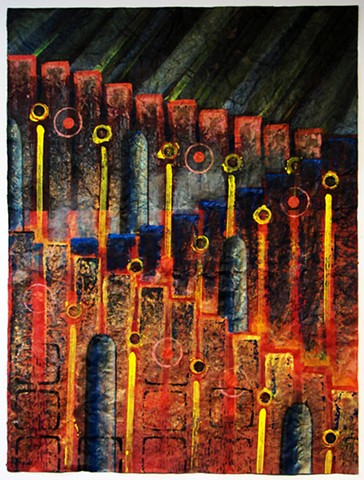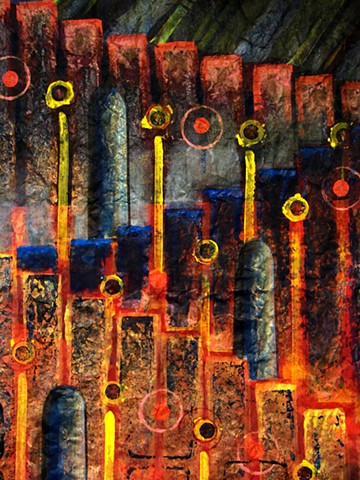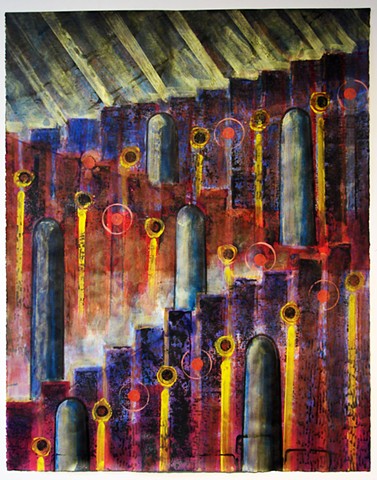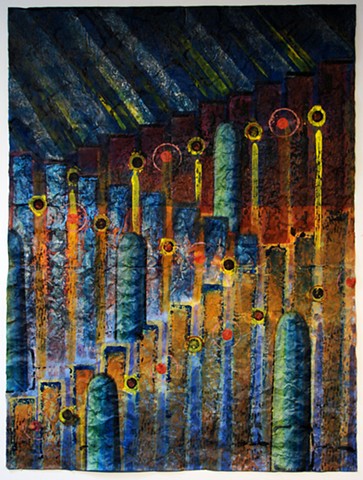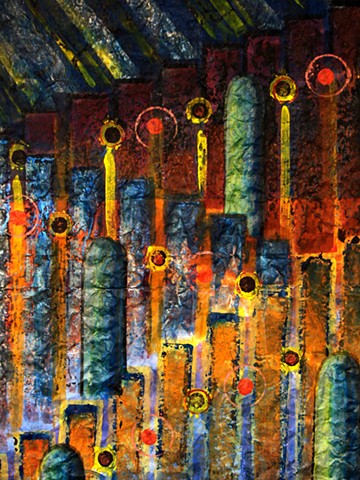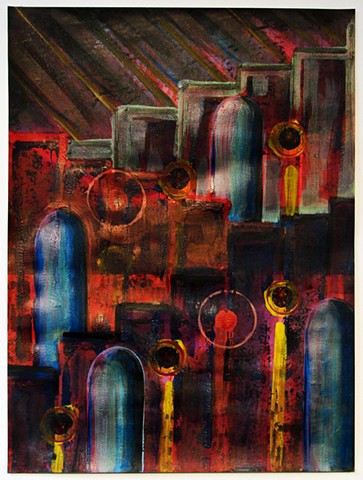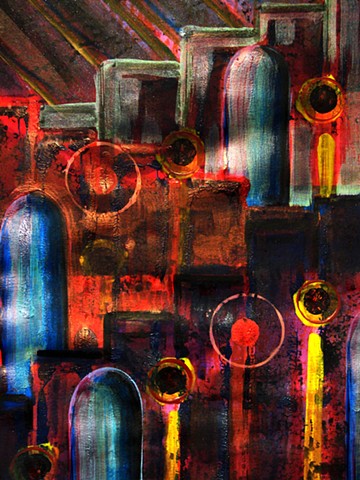Bridge Out
We are probably poised with a major amount of anticipation, against a minor amount of patience.
I awakened from a restless afternoon nap and spied a tiny dangling mass between the vigas above my head. As I tried to focus on what the spider might be about it seemed to move in a pattern that suggested a new web was underway. Here in the back of the house, in winter, I supposed that the chances of a meal for the spider depended less on the completeness of the web than on the sheer chance that any other living insect might still be alive. Then there’s the unlikelihood of a fly of some sort happening to wander along the ceiling and fly just so as to be between the vigas where the spider is waiting. Still the web suggests patient purpose no matter where or what the context. Nature, we imagine, knows what it’s doing, as we would like to think we do. I got up and went for a closer look. Not a spider at all, but perhaps the dusty remnants of a web and dry gob swinging at the end of a web string. Bridge out! Layers of thought in anticipation of an arachnid teleology turn out to be nothing more than an aimless metaphor.
When my mother died, I did a group of paintings that suggested where one might enter one end of a bridge. The other end was, as you might expect, obscured or painted to seem both continuous and ambiguous at once. The roadway of the bridge passed between supporting columns that seemed to be topped by light fixtures or lamps. There was no real need to emphasize linear perspective – making the bridgeway appear to converge upon a distant vanishing point – since the distance was understated and the roadway’s destination was not the object of the paintings. ‘Bridge out’ was the subject and object of these images. Neither anticipation nor patience was relevant here. Reminiscence would see to that, as the past would be frequently recalled with all the impatience of judgements for what had been left unsaid or undone.
No matter how close we might have been to someone, once they are gone the bridge is permanently out. We have only our memory and our individual expectations now to return to. Subject to our own system of analysis and judgement, the past is built and rebuilt to suit that moment of the present we are envisioning. Bridge out, again! Our awareness of the countless revisions of the human story by religion, science, myth, and politics should make us suspicious of how long our present view of the past will stand before it is duly washed away.
The spider will need to finish its web, to catch the next meal and sustain itself into the future. Eventually we can imagine it dashing across the trampoline of its web towards the captive fly. We can anticipate this more easily than a long, drawn-out sequence of starvation. After all, the location of every web must have about the same success rate as many of our own restaurants! We have driven past the boarded-up remnants of many a failed eatery and perhaps wondered: who worked there? are they still friends, lovers, parents? how and why did it go out of business?
Often there is a force in the world, natural or man-made, that is making its way toward us. What this force might represent we sometimes have an inkling or perhaps a symptom of. Other times, like an avalanche it waits nearby, and we can sense its proximity. More often perhaps, it is building and moving, and we remain untouched, an aftershock a long way off. There may even be times when we instinctively move in another direction, a self-preservation that unwittingly prolongs us on a new path. This too is a ‘bridge out’, out of the way of calamity or misfortune, and sometimes we have proceeded without any inkling of what might have befallen us. But then again, as we all remember in the child’s nighttime prayer, we may or may not wake when the bridge goes out.
